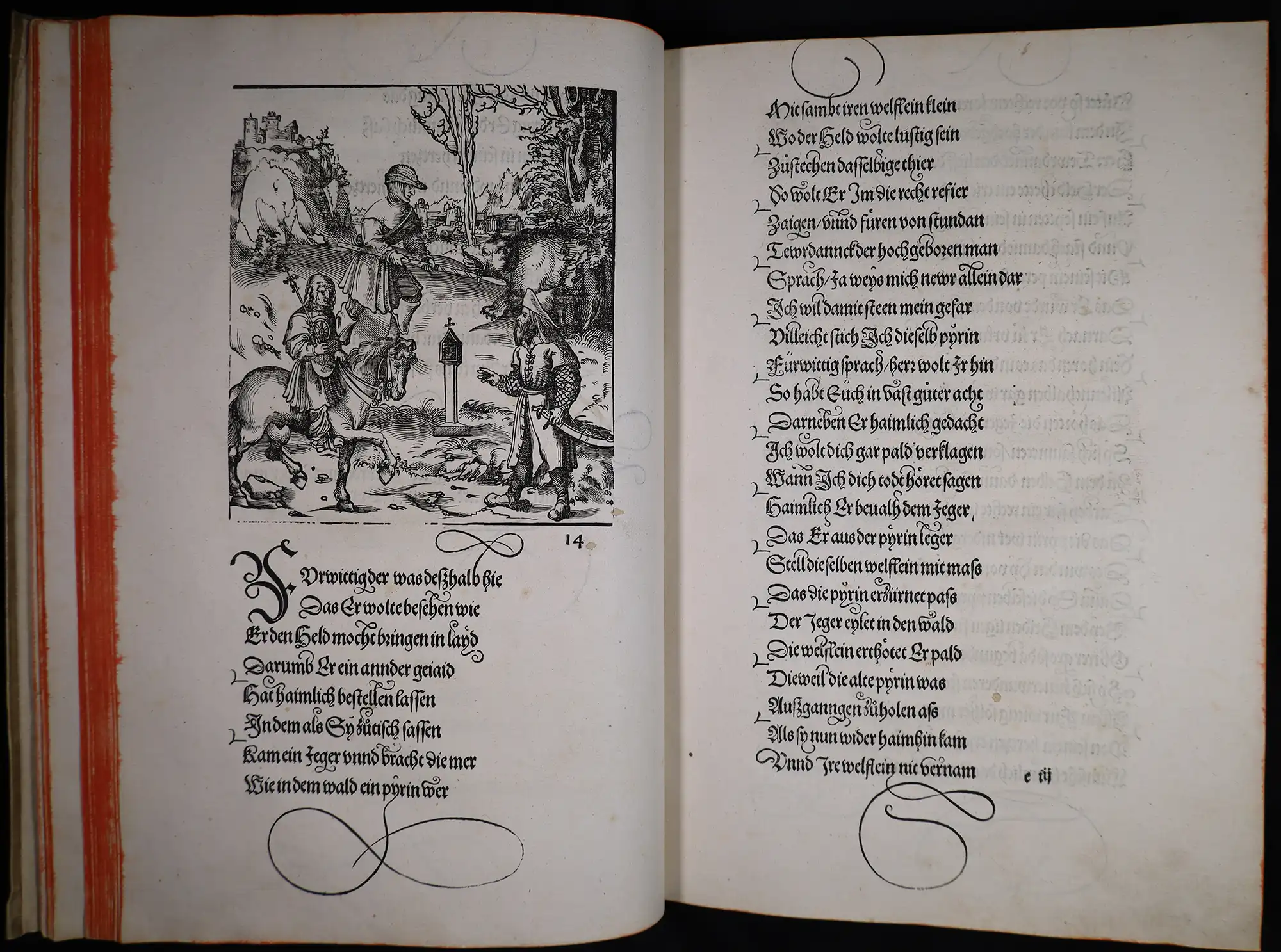Case 7
- Sixteenth century printed books

Teuerdank. 2nd edition. Augsburg: Johann Schonsperger, 1519.
Johann Schönsperger was the first printer to receive official recognition as imperial court printer by appointment to the Emperor Maximilian I (1459-1519) - the earliest monarch to realise the potential value of the printing press for political propaganda. Only a couple of books, however, were completed before Maximilian’s death, both printed by Schönsperger.
One of these was Teuerdank, a fantastic roman à clef describing Maximilian’s wooing of Mary of Burgundy in the style of a medieval romance, first published in 1517. The Reed Collection includes a second edition of 1519, printed from a special fount of type that resembled calligraphy, and featuring woodcuts by Hans Schaufelein, Leonhard Beck, and Hans Burgkmair. The text of Teuerdank is attributed to Maximilian I and his secretaries Melchior Pfintzing and Marx Treitz-Saurwein.
Reed donated this book to the Library in 1958, in which year it formed part of his “Early Printing” exhibition. He described it as “a sumptuous copy” in the exhibition catalogue.

John Foxe. Actes and monuments of matters most speciall in the church. 4th edition. London: John Day, 1583.
This case features the 1583 fourth edition of the work commonly known as Foxe’s Book of Martyrs.
An English theologian, clergyman and historian, John Foxe (1516-87) was the author of this famous chronicle telling of Christian martyrs throughout Western history, particularly the sufferings of English Protestants and Proto-Protestants from the fourteenth century to the reign of Mary I.
In 1563, the first edition of Foxe’s Book of Martyrs (as it was known even at the time) was printed by John Day (ca. 1522-84), who specialised in printing and distributing Protestant literature. The fourth edition was the last, longest, and most physically imposing version issued in Foxe’s lifetime.
Despite provoking the ire of Catholic theologians, the book was widely popular, and became the second most widely read English language book after the Bible. Publication made Foxe instantly famous, and despite a hefty price of more than ten shillings, he gained little financially from its success. The cultural impact of his magnum opus however has been immense, as the work helped to shape the depiction and legend of Mary I as ‘Bloody Mary.’
This book was one of A.H. Reed’s very first antiquarian book purchases. On p. 257 of his Autobiography, Reed describes how, in the 1900s, he “went across to the post office to take delivery of a bulky registered parcel, and I still remember the thrill with which I unwrapped a 16th century folio edition of Foxe’s Book of Martyrs, which I am sure could not have cost more than £1 or so, and which formed the nucleus of the rare books section.”

John Foxe. Actes and monuments of matters most speciall in the church. 4th edition. London: John Day, 1583.
Open image in new window

